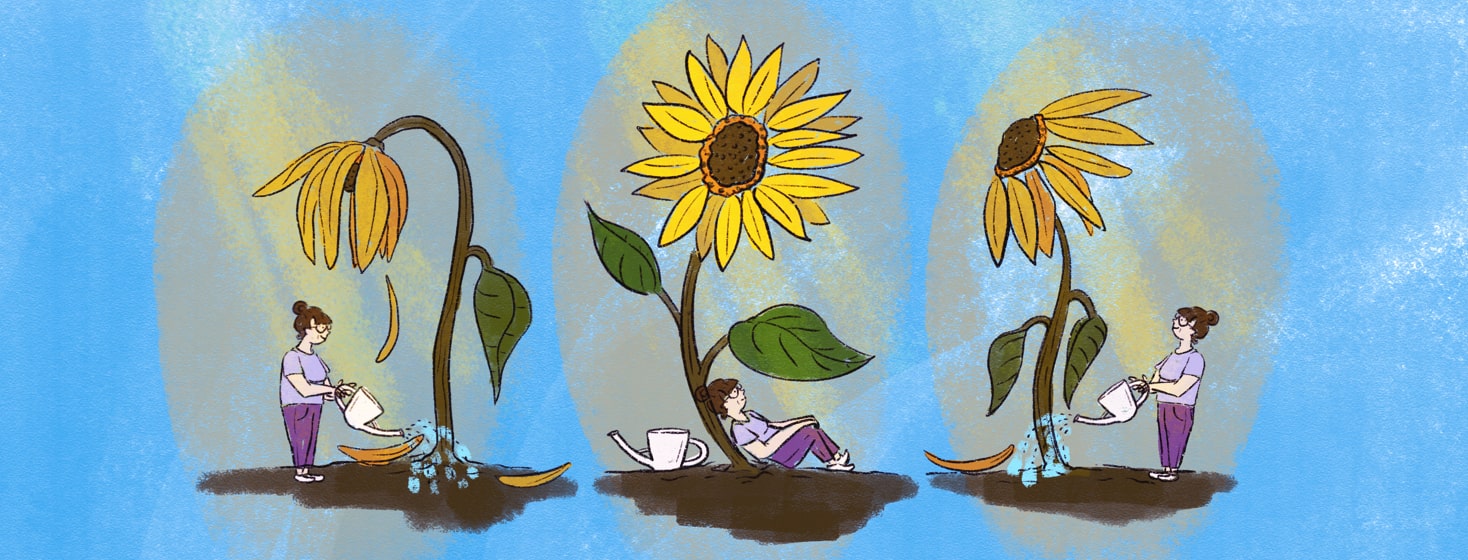3 Tips for Caregivers When They’re Not Needed
Sometimes Keegan, my husband with AxSpa, doesn’t need me. Sometimes, Keegan is back at 80% or 90% or 99%, and I am not needed. It’s a strange place to be as a caregiver of someone with AxSpa. For years, I’ve been the one who’s had to physically, mentally, and emotionally provide for him. It’s been super stressful. And now that his body experiences much less pain and better mobility thanks to Humira, he’s doing so much better than he did many years ago.
As a natural nurturer, I feel like my role has been fulfilled yet I look for more work. There are days and weeks and months when I insert myself to feel needed. Although all that was so stressful, I yearn to feel needed in that capacity. So, what does it look like to be a caregiver when I’m not needed anymore?
1. Remember that you’ll be needed again
Most likely, you’ll be needed again. And soon. The question is what do you do with the time you get back. My biggest piece of advice is to find an activity that gets you out of the house. It could be exercising. Or maybe a getaway weekend with a friend. It’s crucial to allow yourself the space to rest and recover. Because as we all know, AxSpa is incredibly unpredictable.
2. Define with your loved one what caregiving means to both of you
Every Sunday, Keegan and I sit down and answer a bunch of questions about what we love about each other, what we need from each other, and how to reconcile any conflict that arose in the last week. During these discussions, I figure out what my role needs to be in the week. Maybe Keegan doesn’t have a ton of pain, but his fatigue and brain fog are bad. Then, I know how to respond. I find this kind of preparation crucial to set my expectations.
3. You are more than just a caregiver
This one is tough for me to remember, especially as a wife and mother. Society tells me that this is my main role. Everything else is secondary. But it’s just the opposite. Caregivers wear many hats, and when things get bad, that hat gets stuck on our heads. It’s hard to remember what other roles we fulfill and when to take the caregiver hat off. (Or even give it to someone else so we can get a break!)
I recently found that exploring what my core values are grounds me and get me back to myself. What are the most important? What values aren’t being met? That way, I don’t frame everything as just a role like “caregiver” or “mom.” Rather, it gets to the deeper pieces that make me feel like I’m thriving. For example, I bought a deck of cards illustrated by Lisa Congdon and found that one of my top values is vulnerability. I found that I struggled with this lately as I felt like Keegan’s vulnerabilities were more important than mine. What a realization and helpful path for me to feel happier!
What tips do you have for when your caregiving isn’t a primary role you take on?

Join the conversation